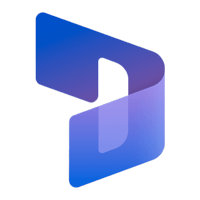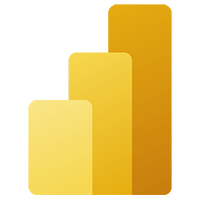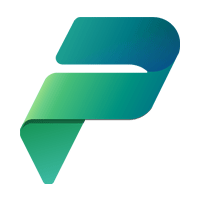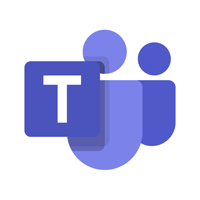What’s Included?
Prerequisites
- Basic understanding of Microsoft Power Platform components
- Familiarity with Microsoft 365 services and Dynamics 365
- General knowledge of data modeling, business logic, and process automation
- Experience with low-code solutions is beneficial but not required
Skills You’ll Gain
- App and Workflow Design
- Data Visualization
- Dataverse Configuration
- Chatbot Implementation
- Access Management
- Platform Integration
- User Experience Optimization
Self Study Materials Included
Videos
Engaging visual content to enhance understanding and learning experience.
Podcasts
Insightful audio sessions featuring expert discussions and real-world cases.
Audiobooks
Listen and learn anytime with convenient audio-based knowledge sharing.
E-Books
Comprehensive digital guides offering in-depth knowledge and learning support.
Module Wise Quizzes
Interactive assessments to reinforce learning and test conceptual clarity.
Additional Resources
Supplementary references and list of tools to deepen knowledge and practical application.
Tools You’ll Master

Dataverse

Dynamics 365

Power Apps

Power Automate

Power Bl

Power Platform

Teams
What You’ll Learn
Design Custom Apps and Automation Workflows
Create tailored solutions using Power Apps and Automate.
Analyze Data and Build Interactive Dashboards
Visualize insights with Power BI for better decisions.
Configure Business Rules and Dataverse Models
Structure data and logic using Microsoft Dataverse tools.
Implement Chatbot Solutions Using Virtual Agents
Build conversational bots to automate user interactions efficiently.
Course Modules
Lesson 1: Get started using Dataverse
Module 1.1: Create and manage environments in Dataverse
Module 1.2: Create tables in Dataverse
Module 1.3: Manage tables in Dataverse
Module 1.4: Create and manage columns within a table in Dataverse
Module 1.5: Working with choices in Dataverse
Module 1.6: Load/export data and create data views in Dataverse
Module 1.7: Connect to other data in a Power Apps canvas app
Lesson 2: Manage permissions and administration for Dataverse
Module 2.1: Get started with security concepts in Dataverse
Module 2.2: Get started with security roles in Dataverse
Module 2.3: Use administration options for Dataverse
Lesson 3: Visualize, import, and export Microsoft Dataverse data
Module 3.1: Visualize data with Dataverse views
Module 3.2: Use Power Query to load data in Dataverse
Module 3.3: Use Microsoft Word and Excel templates with Dataverse
Module 3.4: Export data from Dataverse and use Microsoft Excel to edit records
Module 3.5: Use Azure and external tools to manipulate data
Lesson 4: Create relationships, business rules, calculations, and rollups in Dataverse
Module 4.1: Create a relationship between tables in Dataverse
Module 4.2: Define and create business rules in Dataverse
Module 4.3: Create and define calculation or rollup columns in Dataverse
Lesson 5: Advanced Model-Driven Apps with Power Apps
Module 5.1: Configure forms, charts, and dashboards in model-driven apps
Module 5.2: Use specialized components in a model-driven form
Module 5.3: Solution Architect series: Evaluate Power Platform analytics and AI
Module 5.4: Describe how to build applications with Microsoft Power Apps
Module 5.5: Deploy and refine your app like a pro
Module 5.6: Customize the command bar
Lesson 6: Create a canvas app in Power Apps
Module 6.1: Get started with Power Apps canvas apps
Module 6.2: Customize a canvas app in Power Apps
Module 6.3: How to build the User Interface in a canvas app in Power Apps
Module 6.4: Navigation in a canvas app in Power Apps
Module 6.5: Manage apps in Power Apps
Module 6.6: Build a mobile-optimized app from Power Apps
Lesson 7: Use the UI and controls in a canvas app in Power Apps
Module 7.1: Navigation in a canvas app in Power Apps
Module 7.2: How to build the User Interface in a canvas app in Power Apps
Module 7.3: Use and understand Controls in a canvas app in Power Apps
Module 7.4: Document and test your Power Apps application
Lesson 8: Use basic formulas to make better Power Apps canvas apps
Module 8.1: Create formulas to change properties in a Power Apps canvas app
Module 8.2: Create formulas to change behaviors in a Power Apps canvas app
Module 8.3: Author a basic formula that uses tables and records in a Power Apps canvas app
Lesson 9: Advanced Canvas App Development
Module 9.1: Create formulas that use tables, records, and collections in a canvas app in Power Apps
Module 9.2: Use imperative development techniques for canvas apps in Power Apps
Lesson 10: Work with Power Pages websites
Module 10.1: Explore Power Pages design studio
Module 10.2: Explore Power Pages design studio data and security features
Module 10.3: Work with Power Pages metadata
Module 10.4: Explore Power Pages templates
Module 10.5: Integrate Power Pages websites with Dataverse
Module 10.6: Work with Liquid template language in Power Pages
Module 10.7: Set up Power Pages security
Module 10.8: Build user experience in Power Pages
Lesson 11: Extend Power Pages
Module 11.1: Access Dataverse in Power Pages websites
Module 11.2: Extend Power Pages websites
Module 11.3: Build custom Power Pages web templates
Lesson 12: Administer Power Pages
Module 12.1: Power Pages administration
Module 12.2: Integrate Power Pages with web-based technologies
Module 12.3: Authentication and user management in Power Pages
Module 12.4: Power Pages maintenance and troubleshooting
Lesson 13: Work with Power Automate error handling and expressions
Module 13.1: Best practices for error handling in Power Automate flows
Module 13.2: Introduction to expressions in Power Automate
Lesson 14: Integrate Power Automate flows and Dataverse
Module 14.1: Use Dataverse triggers and actions in Power Automate
Module 14.2: Extend Dataverse with Power Automate
Lesson 15: Power Platform Solution Management
Module 15.1: Share a cloud flow with Power Automate
Module 15.2: Understanding Low Code as a Traditional Developer
Module 15.3: Manage solutions in Power Apps and Power Automate
Module 15.4: Introduction to solutions for Microsoft Power Platform
Lesson 16: Validate your Power Platform Functional Consultant skills
Module 16.1: Create tables in Dataverse
Module 16.2: Get started with model-driven apps in Power Apps
Module 16.3: Get started with Power Apps canvas apps
Module 16.4: Get started with Power Automate
Module 16.5: Challenge project – Build applications and automation solutions
Frequently Asked Questions
No, the course is focused on low-code development and is accessible to those with minimal programming experience.
A trial environment is typically provided during the course. No separate license is required for learning.
Yes, it includes exercises, and scenario-based practice to apply what you learn.
Business analysts, functional consultants, and solution builders who want to use Power Platform to solve business challenges.
It’s helpful but not required—Power Platform can be used independently or integrated with Dynamics 365.